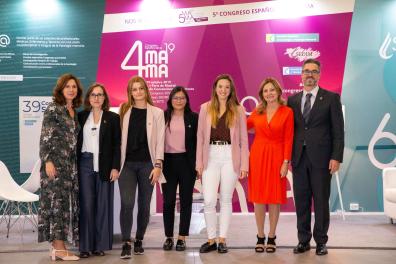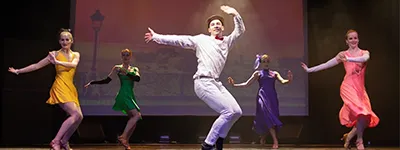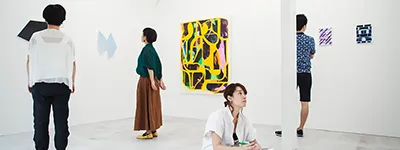
Cinema as the main concept of the 4th edition of the ‘Spanish Mama Congress ’
The Mama Congress aimed to be a multidisciplinary forum integrating all the specialists who participate in breast pathology, and they achieved it on October 17-19 at IFEMA. With this goal, the Spanish Society of Diagnostic Breast Imaging (SEDIM) and the Spanish Society of Senology and Breast Pathology (SESPM) began to work. The first one is made up of specialists in diagnostic imaging, the second one is multidisciplinary, composed of surgeons, gynecologists, oncologists, pathologists, oncologists and radiotherapists. We tell you the keys to this atypical, emotional and at the same time professional congress.
The 4th Spanish Mama Congress. The personalization of radiological screening, the elimination of treatments without therapeutic value, artificial intelligence, or the changing axillary scenario were some of the main aspects that were addressed in this edition. "From what was discussed in the congress, a series of clarifying algorithms of interest for daily practice were presented with concrete proposals for action," says Pilar Tena of Theoria Congresos (the agency that organized the congress).
“This congress offered a unique forum where specialists could discuss their progress in the same way that Spanish hospitals are working on Mama Units”
This edition innovated with the theme of ‘cinema’. In this edition, cinema was chosen as the main concept as part of the congress’ image as well as giving the title of the different working groups with titles of such iconic films as ‘Matrix’, ‘L’Espionne de Tanger’ or ‘Rear Window. “It is difficult to reach so many specialists and we opted for cinema as a means to communicate the congress through its website, newsletter and social networks to give a more fresh and fun air to a medical issue,” says Pilar Tena.
Connecting the pharmaceutical industry and healthcare technology companies. It is a complicated challenge, because there are many specialties and each one must be addressed with a different message. According to Pilar, "it was a challenge reaching the public: 1,400 participants and more than 30 participating companies." Each company has its own objectives and attends the congresses of that specific specialty, getting companies to participate in a multidisciplinary congress was complicated but in this edition it has been shown that for companies that work in breast pathology this is their reference congress.
What does IFEMA represent? The objective of the congress was to gather everyone in a single space; “it is one of the few venues that allows us to gather so many participants and activities,” says Pilar. In addition, we had to find a space that would not separate the participants, “for this we designed a street with rooms on both sides and all the commercial exhibition in the center,” says Pilar. The congress program was designed with 90-minute round tables with speakers from the different specialties to address each issue from different visions. In addition, participating companies need stands and rooms where they can hold workshops to present their products and different techniques that attending physicians can try.
Event design. The congress was distributed in 15 parallel rooms: the main auditorium with 8 round tables and two keynote conferences in which national and international speakers of the highest level participated. The main related companies also participated by organizing parallel tables: AECIMA, AEC, SEAP, SEOQ, SEOR, GEICAM, or SOLTI among others.








